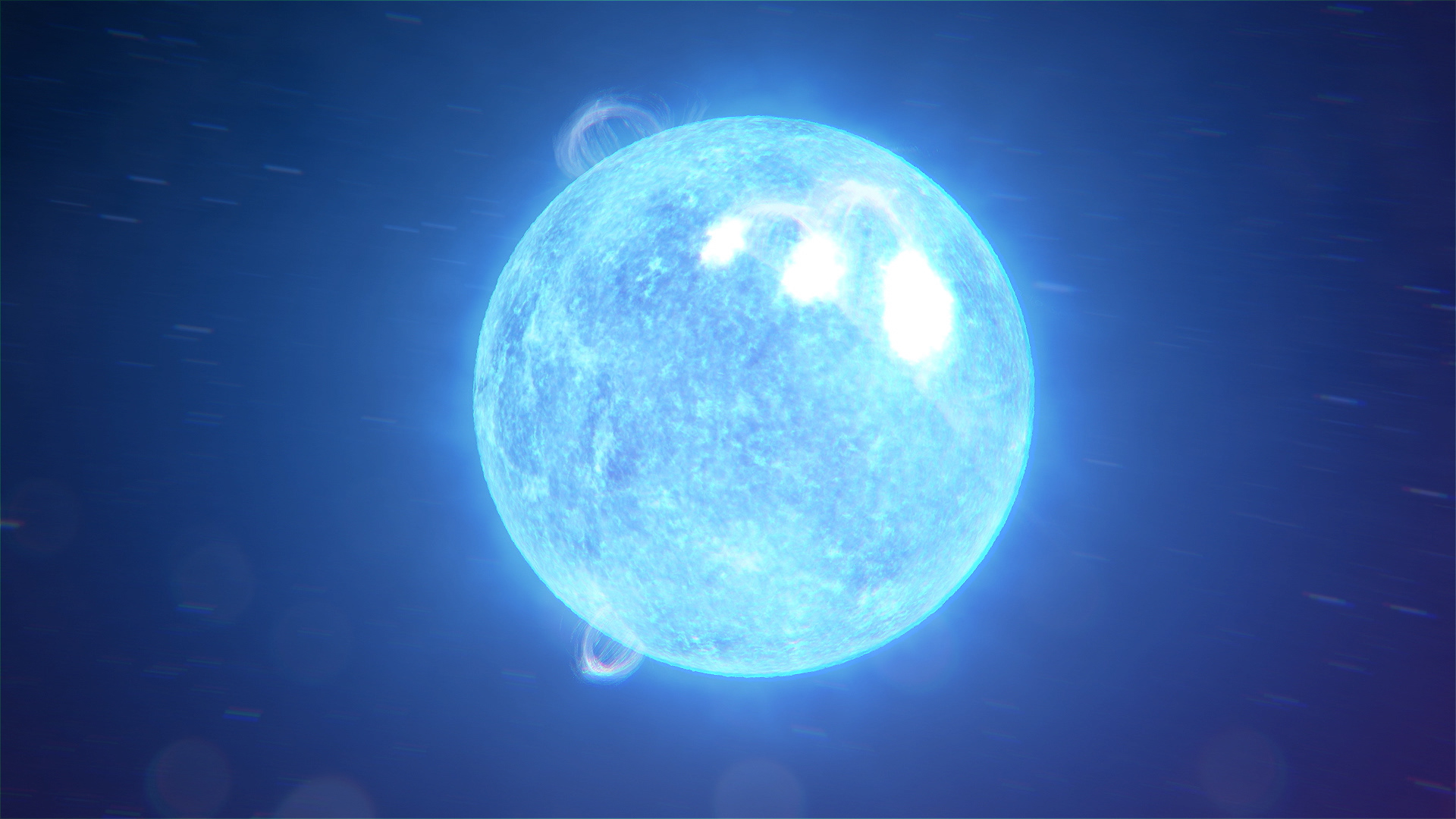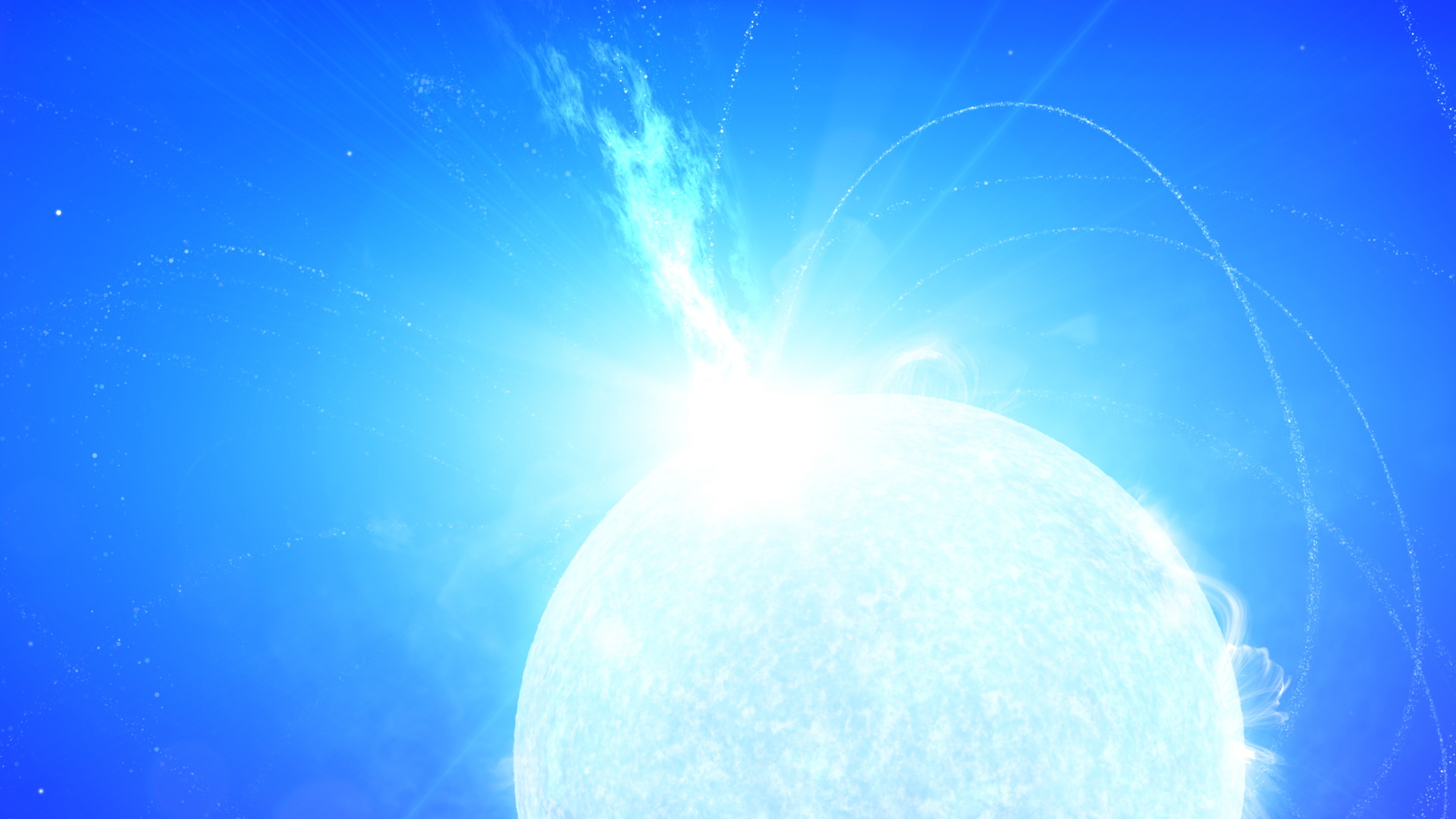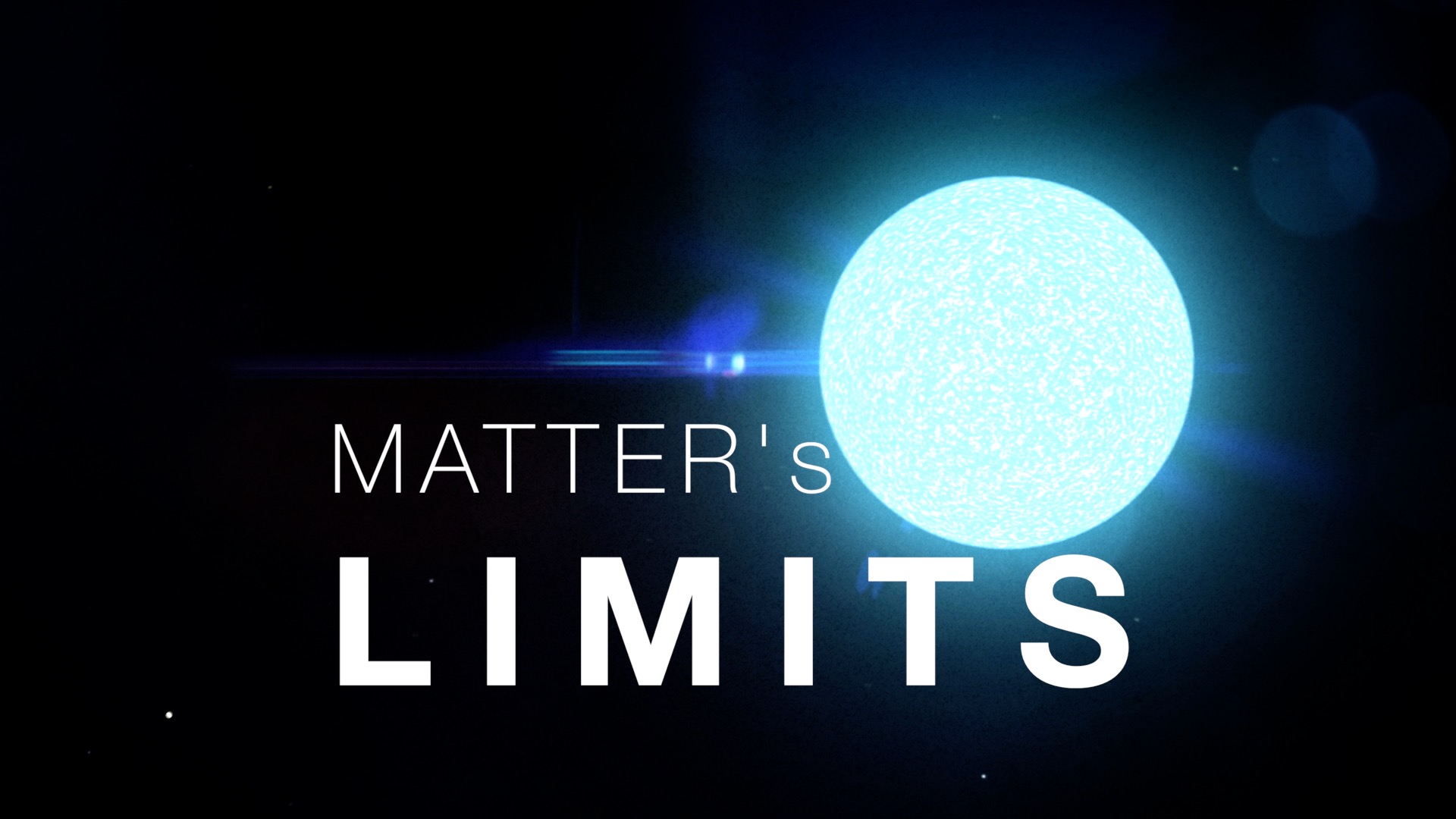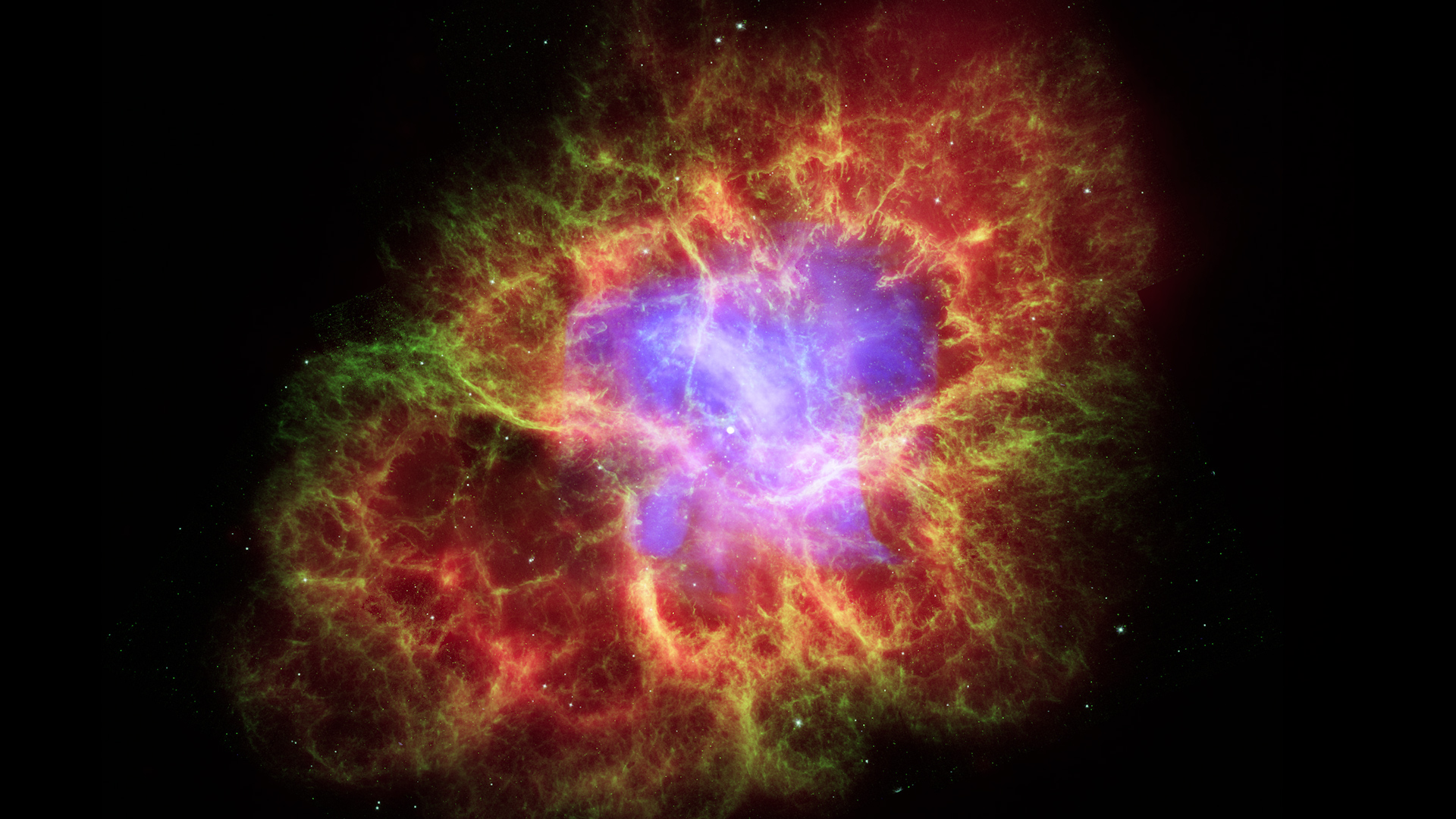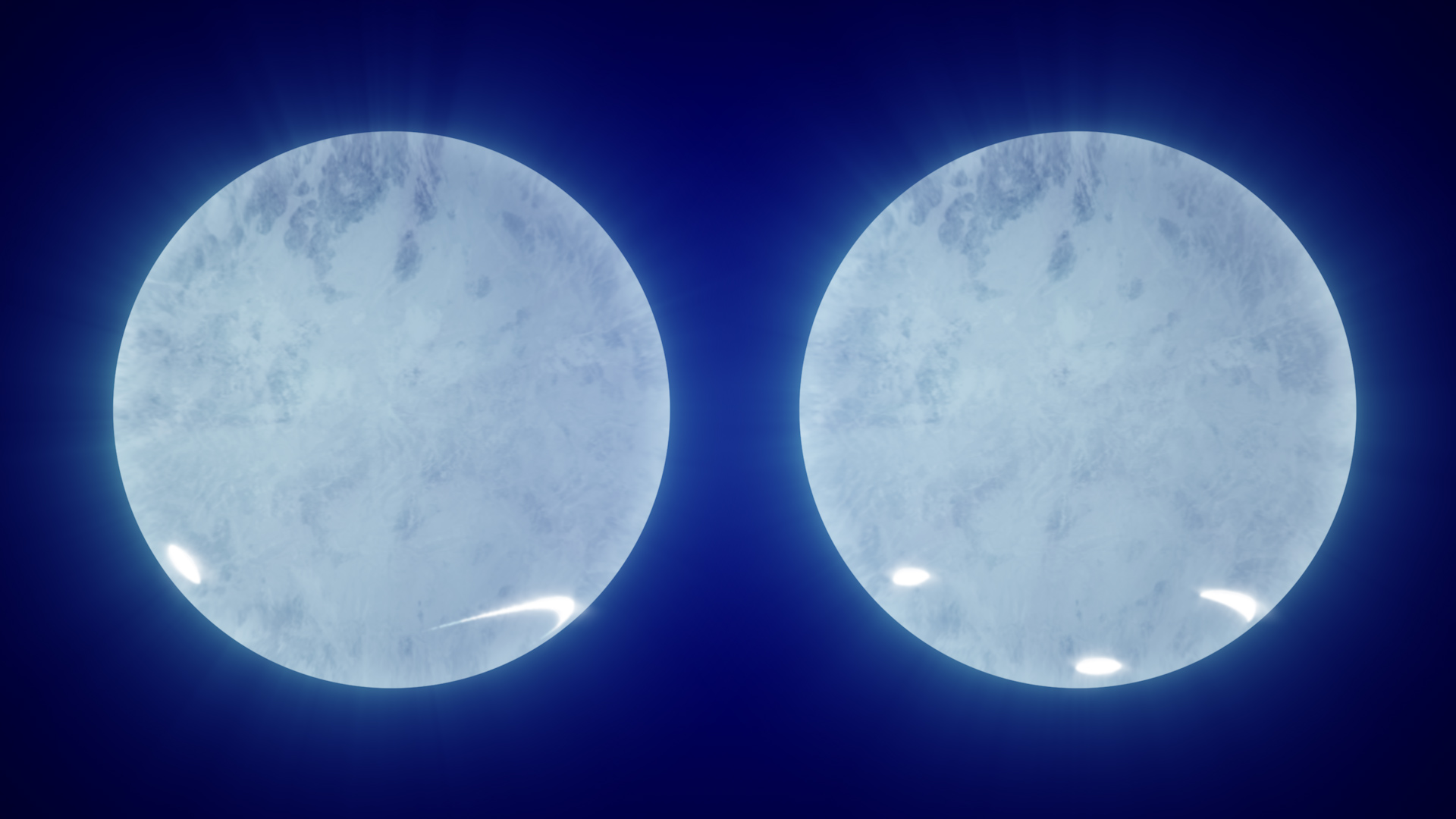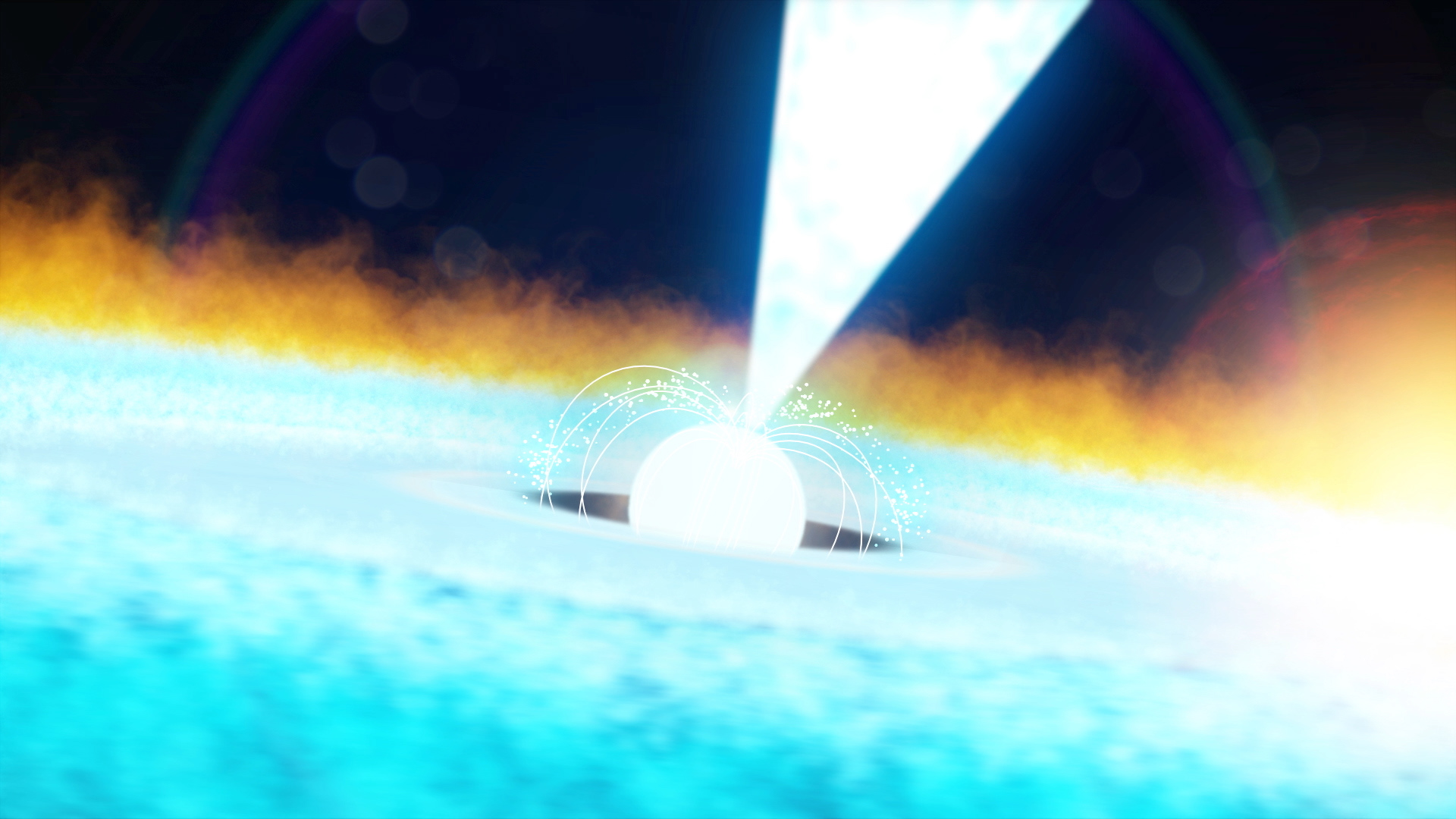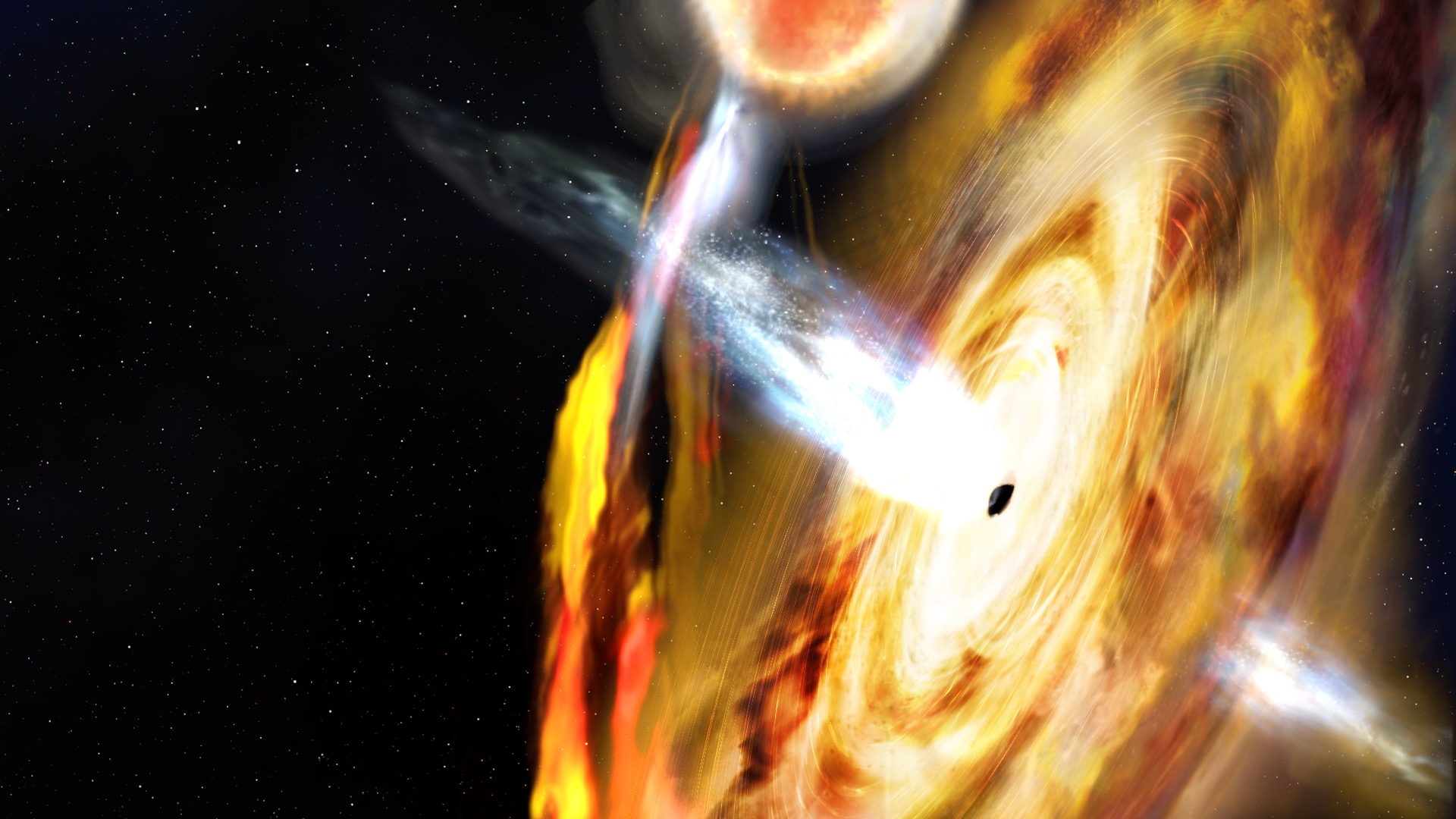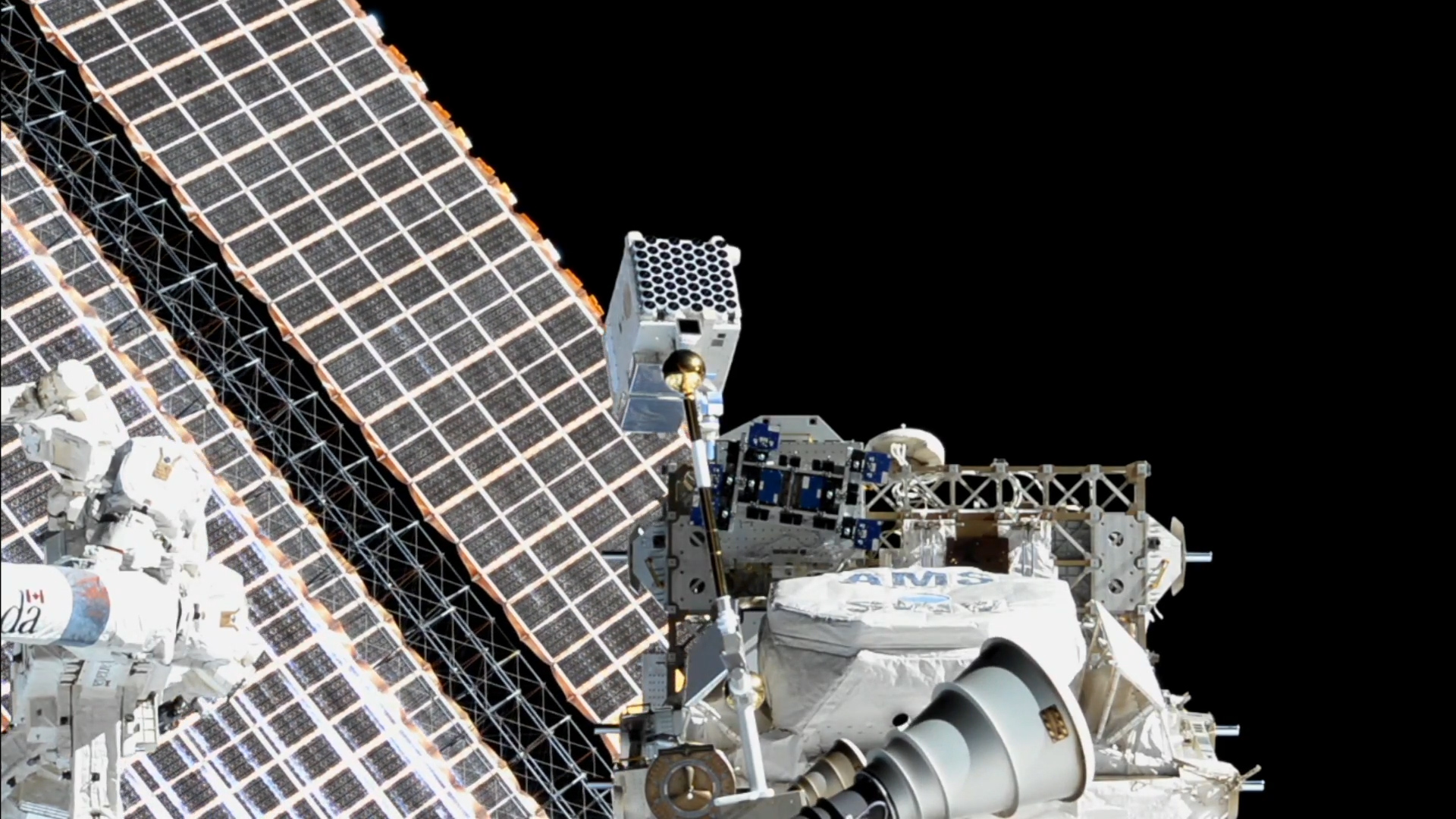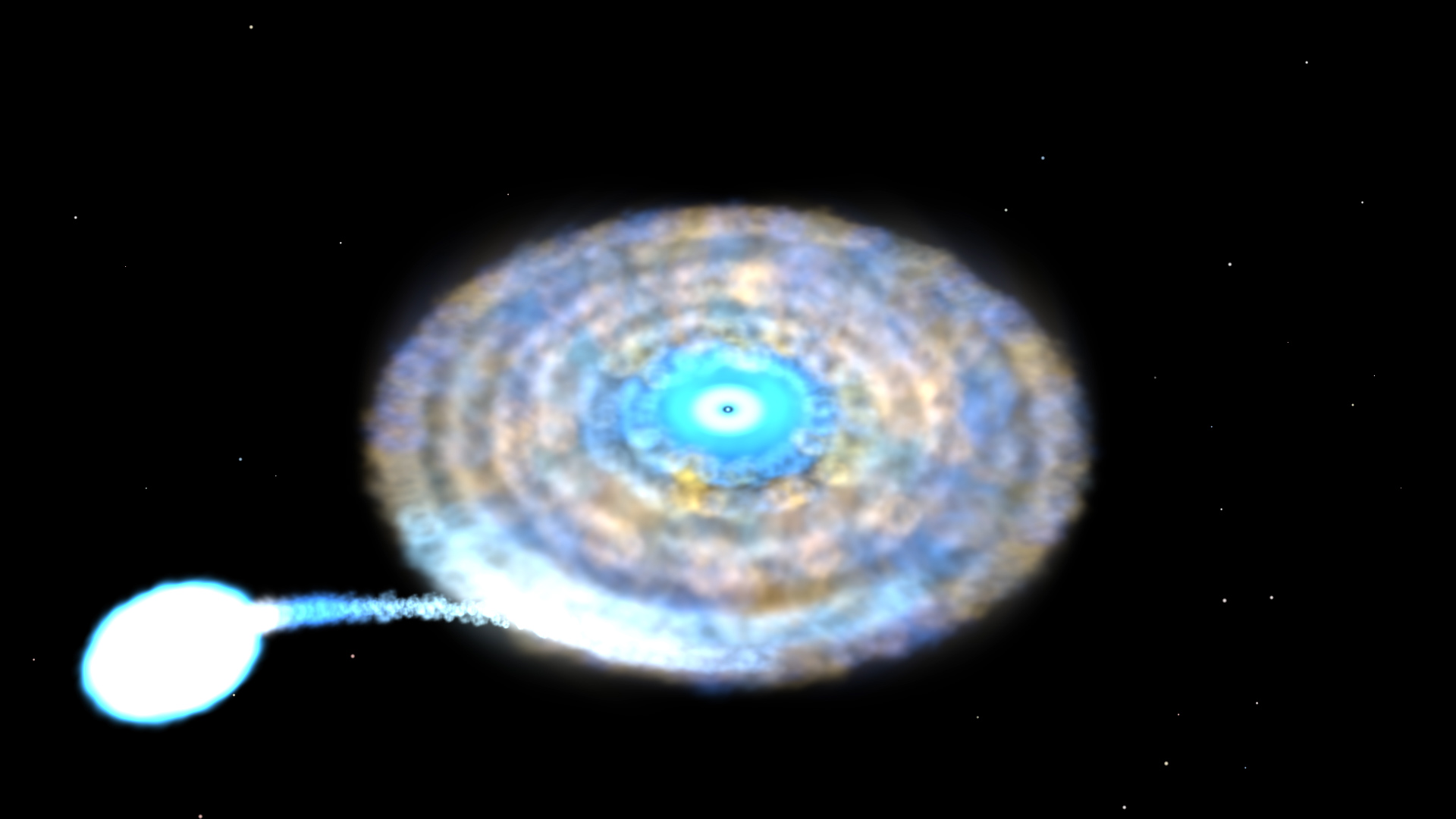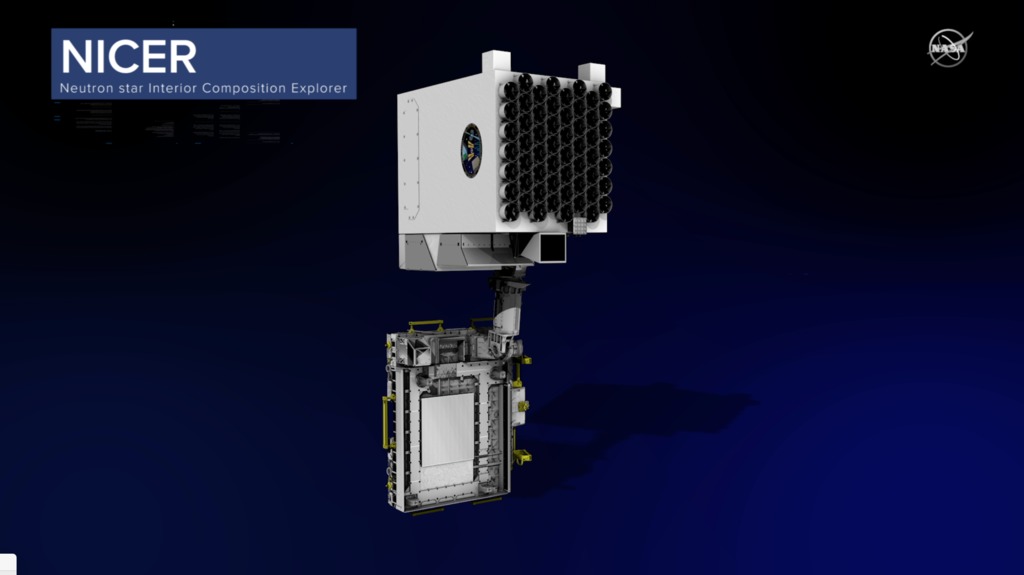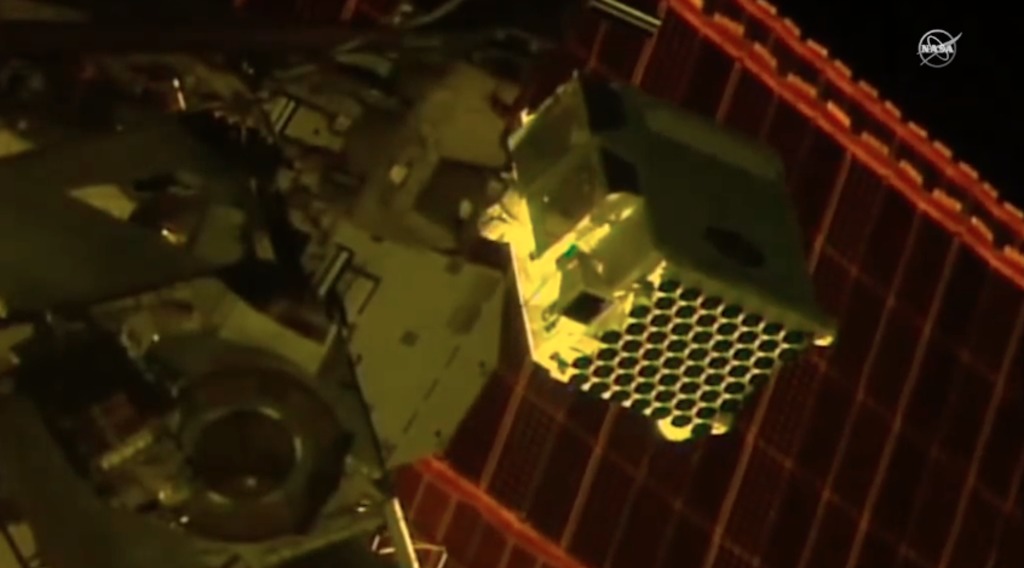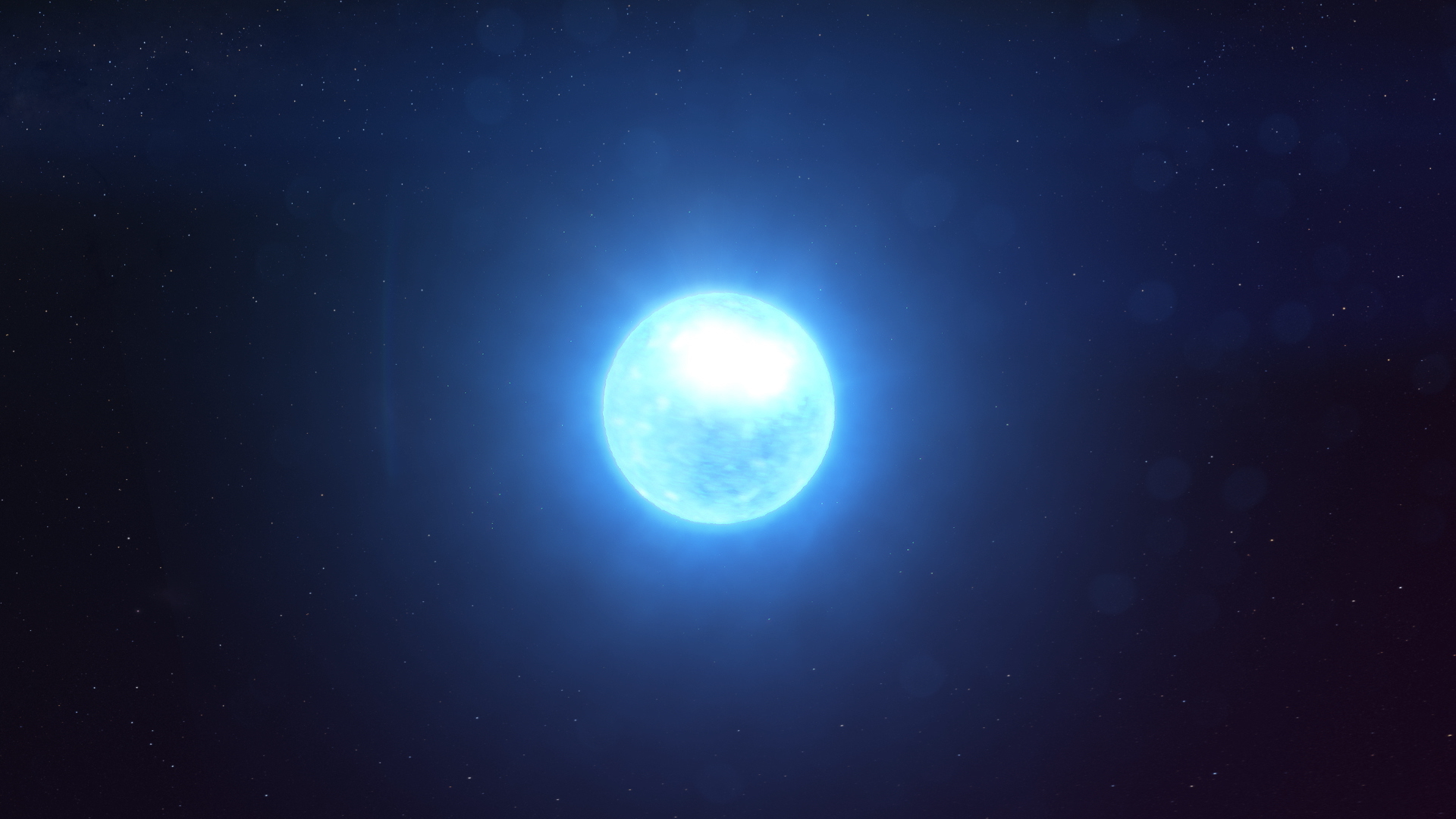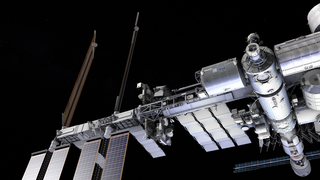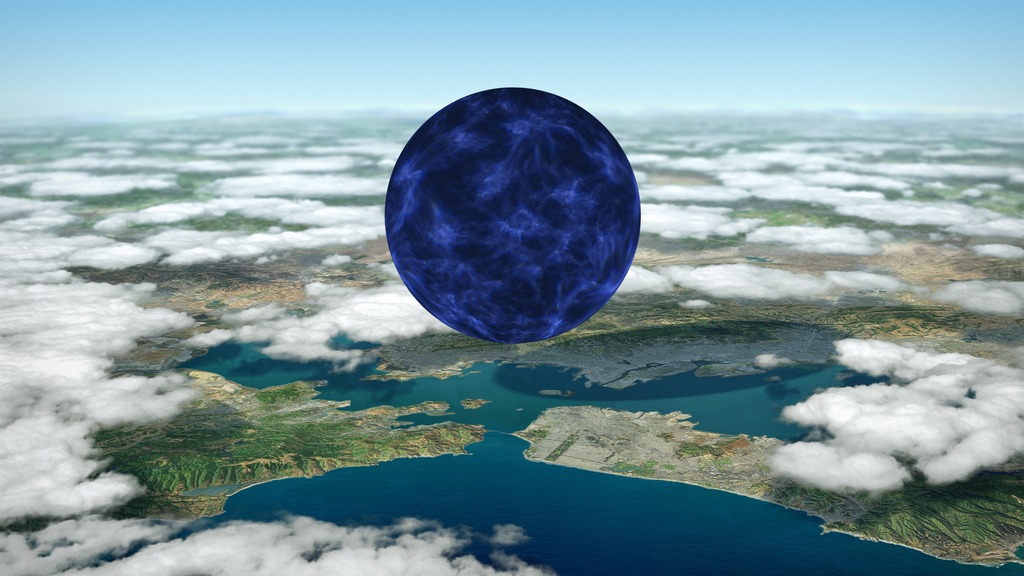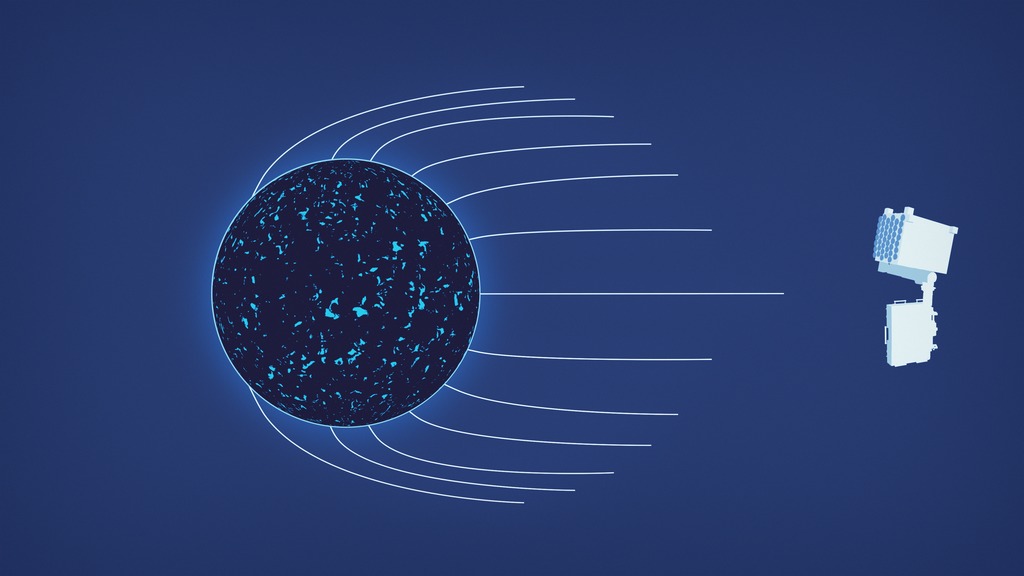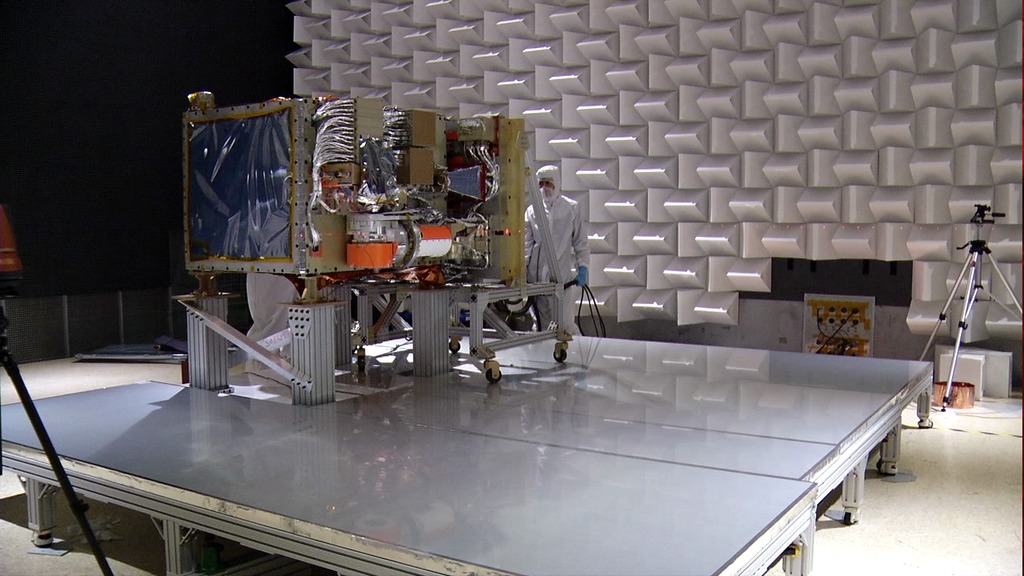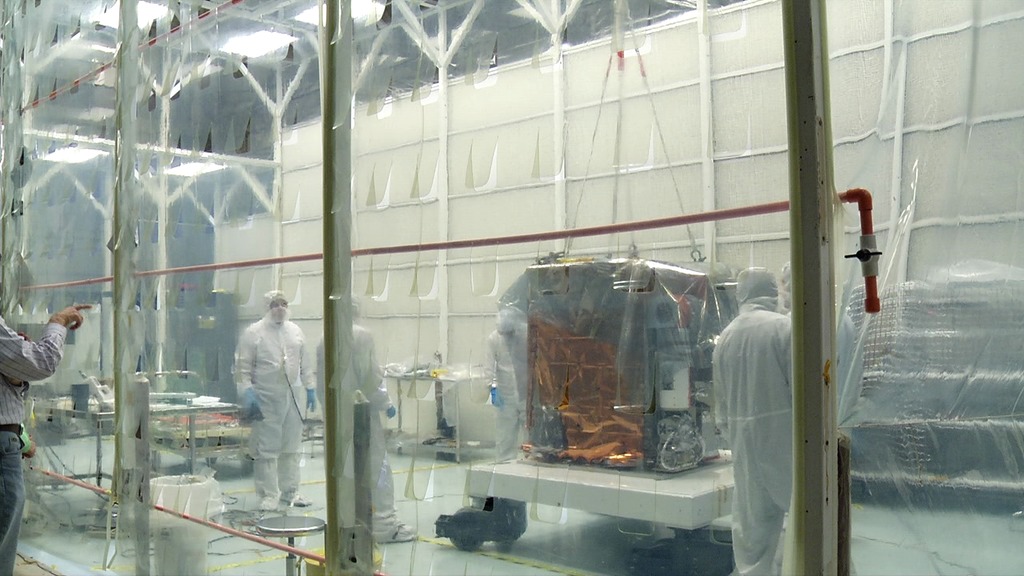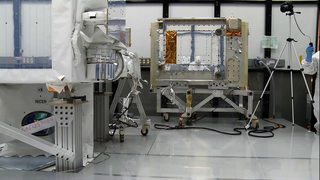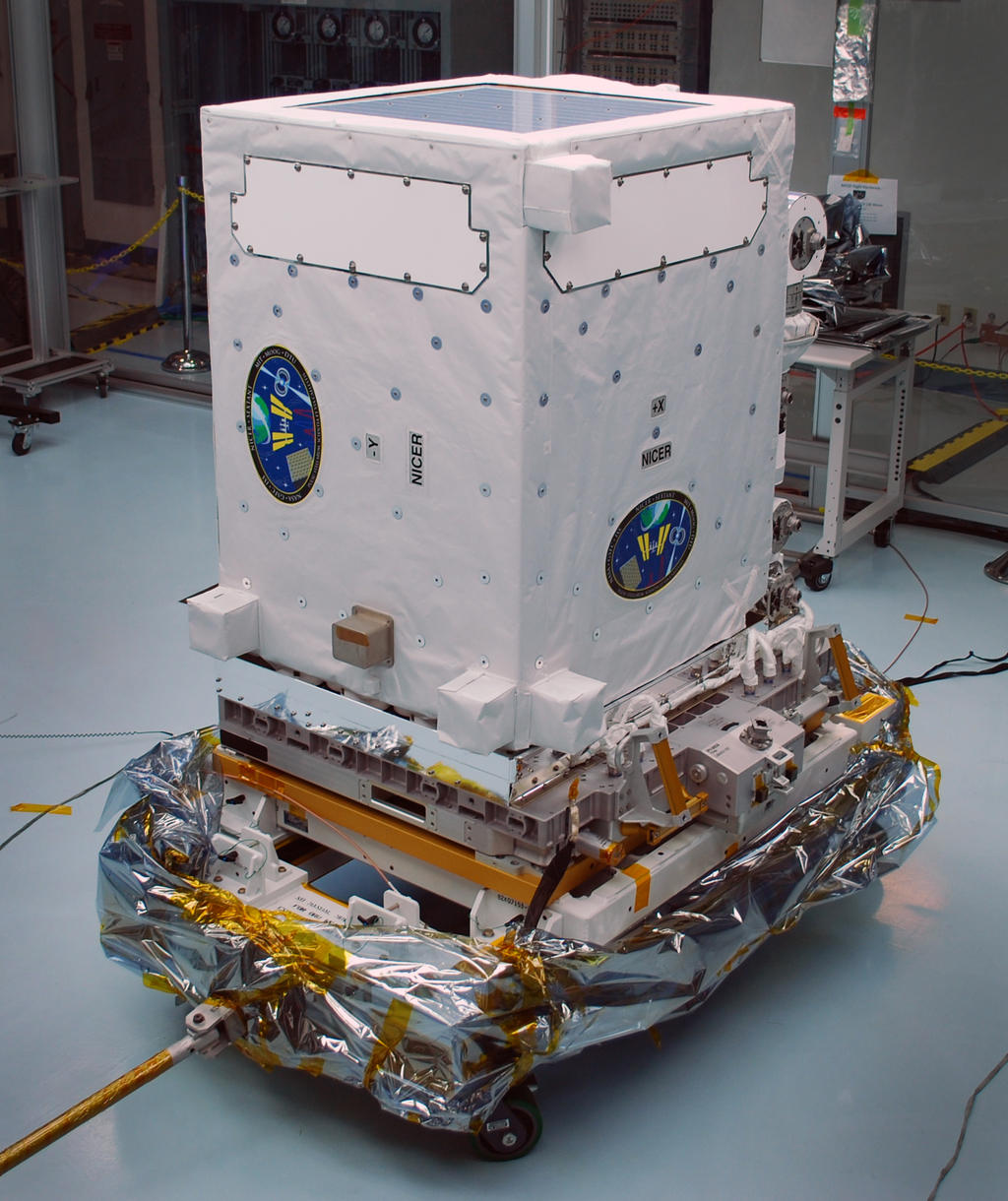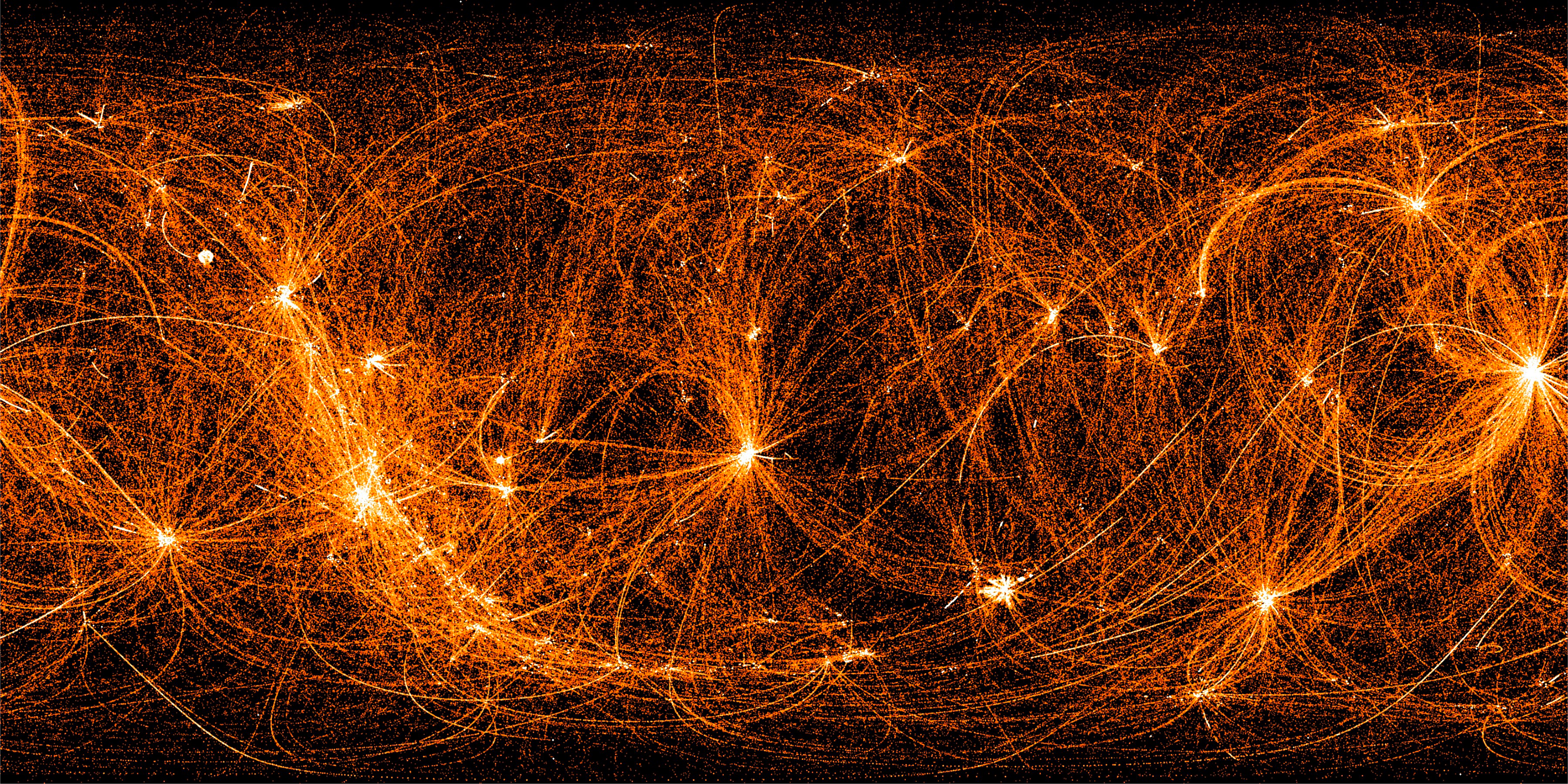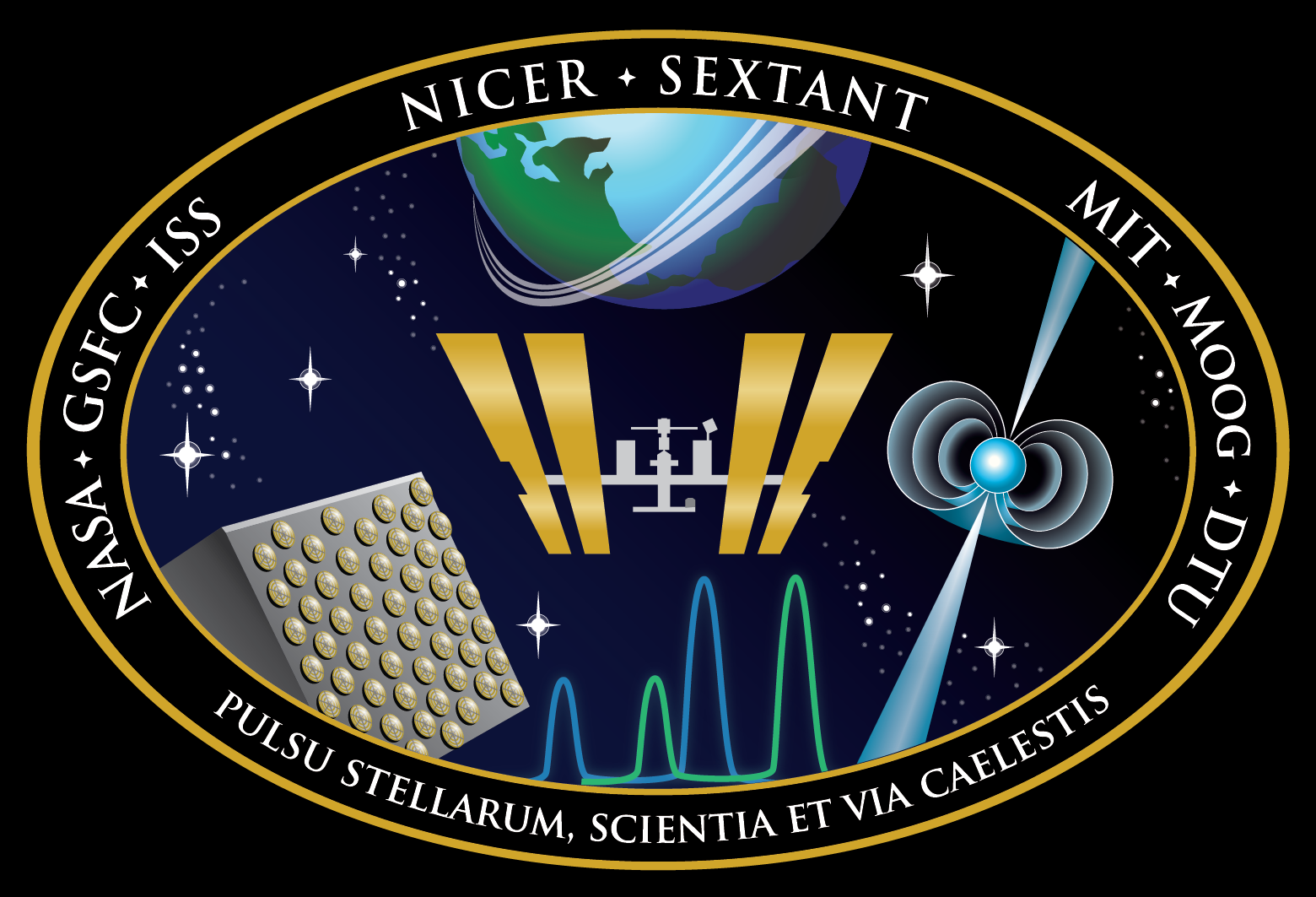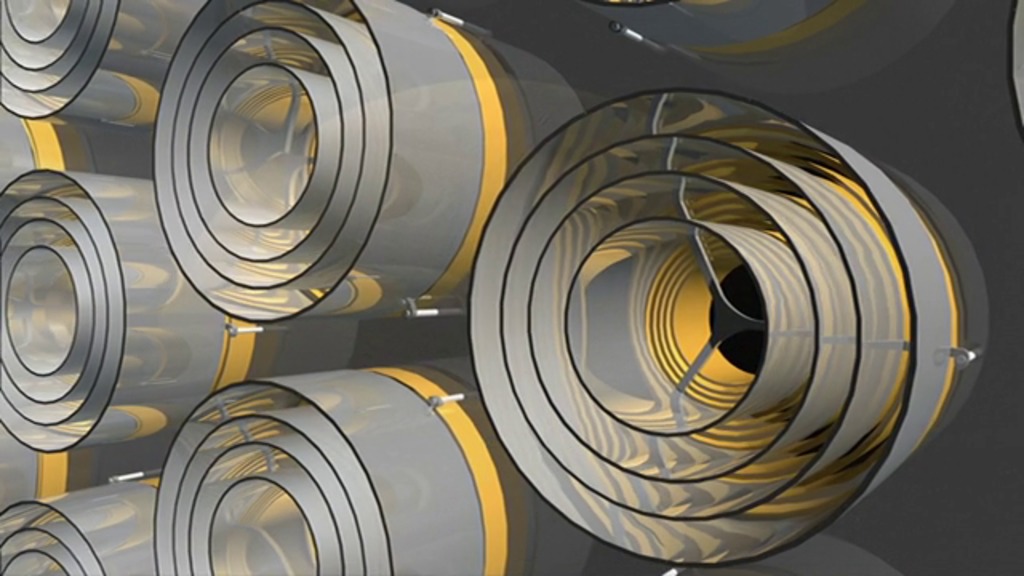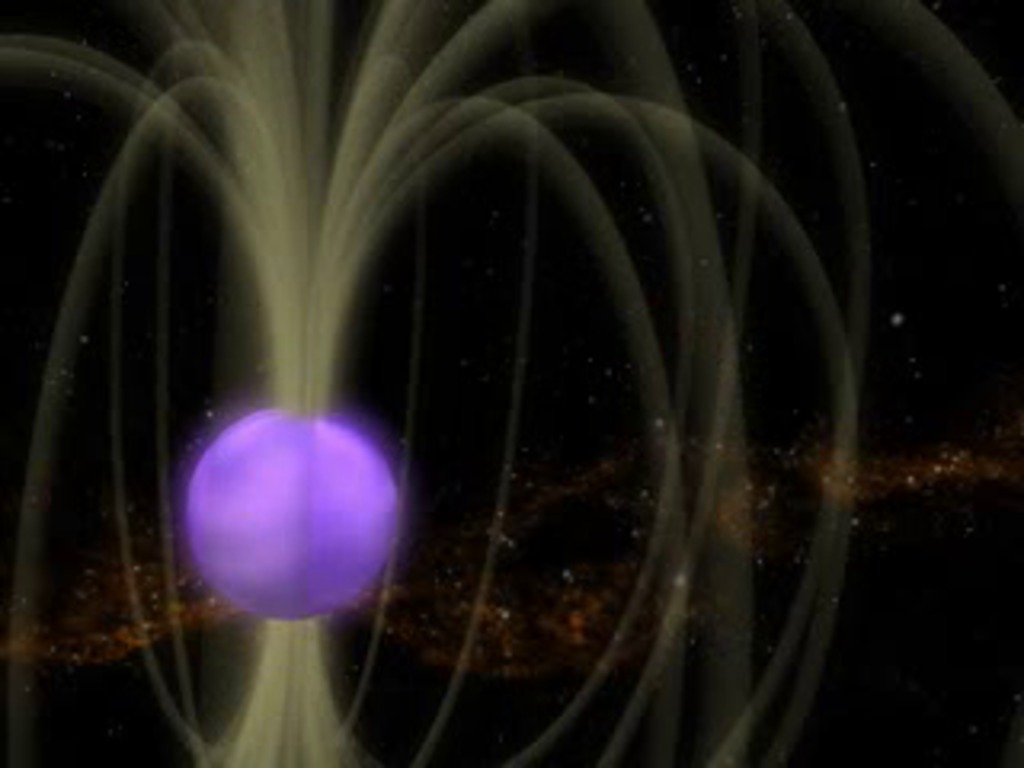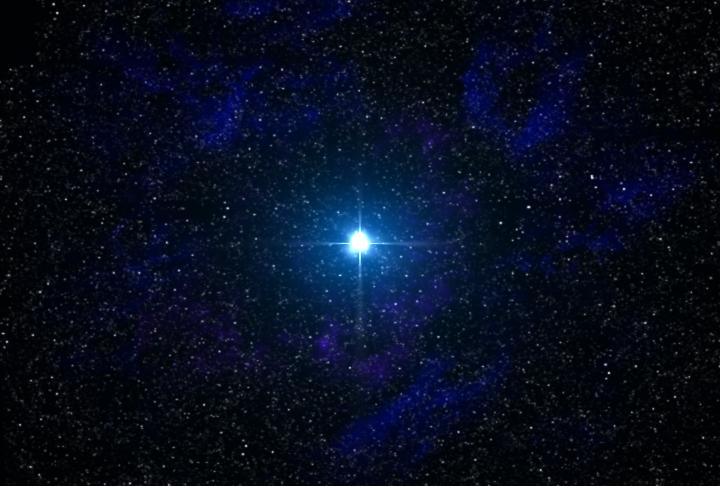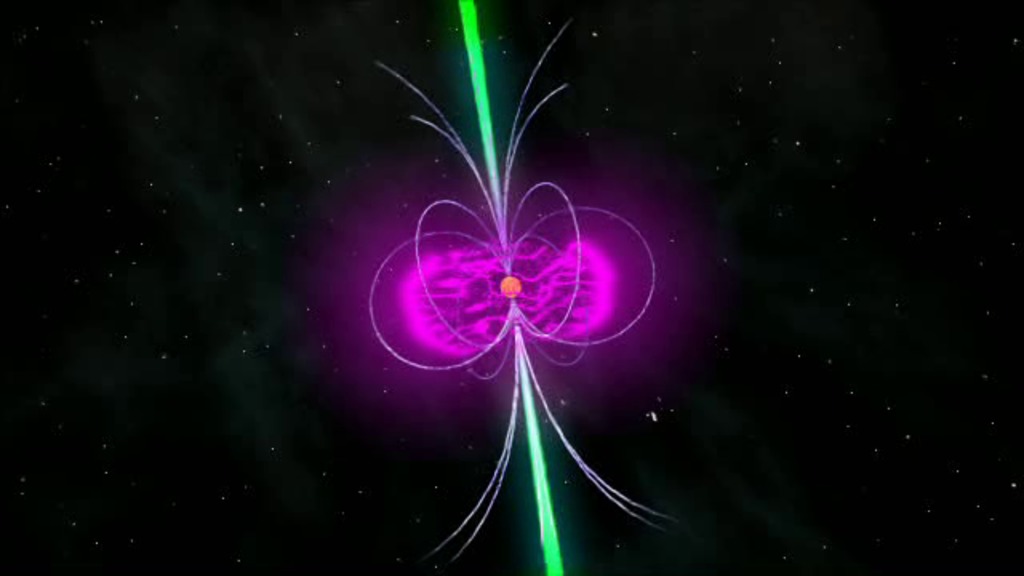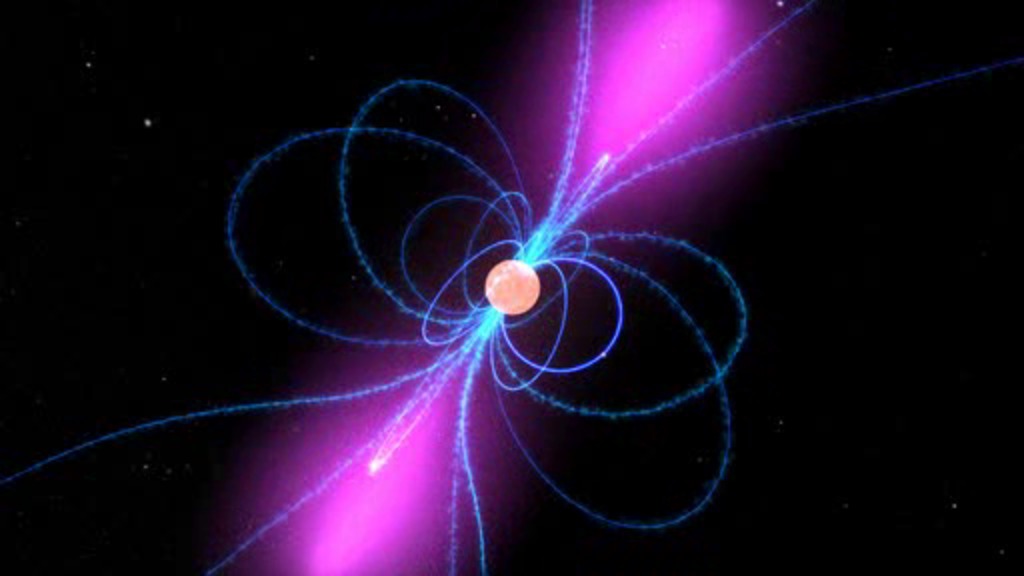NICER
Overview
The Neutron star Interior Composition Explorer
Installed aboard the International Space Station in June 2017, NASA’s Neutron star Interior Composition Explorer provides high-precision measurements of neutron stars, objects containing ultra-dense matter at the threshold of collapse into black holes. NICER will also test, for the first time in space, technology that uses pulsars as navigation beacons.
For more information visit the NICER website.
Produced Videos
- Produced Video
- Produced Video
- Produced Video
- Animation
- Produced Video
- Produced Video
- Produced Video
- Produced Video
- Produced Video
- Produced Video
- Produced Video
Animations
Migrating Magnetar Hot Spot Animations
Go to this pageAnimation showing a wide view of SGR 1830, a magnetar that underwent an outburst in October 2020. NICER measurements from the first day of the event show that the X-ray emission exhibited three close peaks with every rotation. Astronomers think the triple peak occurred when three individual surface regions much hotter than their surroundings spun into and out of our view from Earth. NICER tracked the magnetar nearly every day for more than a month. Over that time, the hot spots dimmed, drifted relative to each other, and two even merged – a phenomenon not seen before. Credit: NASA's Goddard Space Flight Center Conceptual Image Lab || 02_MAGNETAR_Wide_view_BlipOnly_Still.png (1920x1080) [2.3 MB] || 02_MAGNETAR_Wide_view_BlipOnly_Still_print.jpg (1024x576) [44.5 KB] || 02_MAGNETAR_Wide_view_BlipOnly_Still_searchweb.png (320x180) [52.6 KB] || 02_MAGNETAR_Wide_view_BlipOnly_Still_thm.png (80x40) [4.4 KB] || 02_MAGNETAR_Wide_view_BlipOnly_1080.mp4 (1920x1080) [36.0 MB] || 02_MAGNETAR_Wide_view_BlipOnly_web.webm (1920x1080) [3.5 MB] || 02_Magnetar_Wide_BlipOnly1 (1920x1080) [64.0 KB] || 02_MAGNETAR_Wide_view_BlipOnly_ProRes_1920x1080_2997.mov (1920x1080) [502.4 MB] ||
NICER Payload Animations
Go to this sectionAnimated video and stills of the Neutron star Interior Composition Explorer (NICER) payload.
Neutron Star Animations
Go to this pageThe Neutron star Interior Composition Explorer (NICER) mission will study neutron stars, the densest known objects in the cosmos. These neutron star animations and graphics highlight some of their unique characteristics.For more information about NICER visit: nasa.gov/nicer. ||
NICER Lensing
Go to this pageThe Neutron star Interior Composition Explorer (NICER) mission will study neutron stars, the densest known objects in the cosmos. These neutron star animations and graphics highlight some of their unique characteristics.For more information about NICER visit: nasa.gov/nicer. ||
Raw Footage/B-roll
NICER Electromagnetic Testing Time-lapse Videos
Go to this pageThe Neutron star Interior Composition Explorer (NICER) payload undergoes electromagnetic testing at NASA's Goddard Space Flight Center in Greenbelt, Maryland.Electromagnetic testing serves to verify that NICER’s electrical subsystems do not interfere with each other or with International Space Station electrical systems through, for example, conducted or transmitted emissions. This test also verifies that NICER is not susceptible to malfunction due to the electromagnetic environment of the space station.Two time-lapse videos show the NICER payload deploy during electromagnetic testing and return to its stowed configuration following the tests. ||
NICER Lift Time-lapse
Go to this pageThe Neutron star Interior Composition Explorer (NICER) box-shaped X-ray Timing Instrument (XTI) is lifted and integrated at NASA's Goddard Space Flight Center in Greenbelt, Maryland.The time-lapse shows the XTI, with attached flight electronics and the payload's pointing system, being lifted and joined to the flight Adapter Plate, NICER's connection to the International Space Station-provided hardware for installation on station. ||
NICER Range of Motion Time-lapse
Go to this sectionTime-lapse of the Neutron star Interior Composition Explorer (NICER) range of motion test was taken on April 11, 2016, at NASA's Goddard Space Flight Center in Greenbelt, Maryland.
NICER Mission B-roll Footage
Go to this pageThe Neutron star Interior Composition Explorer (NICER) mission was built and tested at NASA's Goddard Space Flight Center in Greenbelt, Maryland.In addition to NASA Goddard scientists and engineers, the mission team includes the Massachusetts Institute of Technology and commercial partners, who provided spaceflight hardware. ||
Still Images and Graphics
NICER's Night Moves
Go to this pageThis image of the whole sky shows 22 months of X-ray data recorded by NASA's Neutron star Interior Composition Explorer (NICER) payload aboard the International Space Station during its nighttime slews between targets. NICER frequently observes targets best suited to its core mission (“mass-radius” pulsars) and those whose regular pulses are ideal for the Station Explorer for X-ray Timing and Navigation Technology (SEXTANT) experiment. One day they could form the basis of a GPS-like system for navigating the solar system.Credits: NASA/NICER || NICERNightMoveslabels.jpg (3299x1650) [13.7 MB] ||
Science with NICER
Go to this pageFirst image in presentation || JasonLogo_SCREEN-01.png (1560x1063) [488.1 KB] || JasonLogo_SCREEN-01_print.jpg (1024x576) [148.2 KB] || JasonLogo_SCREEN-01_searchweb.png (320x180) [76.1 KB] || JasonLogo_SCREEN-01_web.png (320x218) [81.8 KB] || JasonLogo_SCREEN-01_thm.png (80x40) [7.4 KB] || Dr. Zaven Arzoumanian's AAS presentation from January 2015 ||
SEXTANT Demonstration
NICER is a two-in-one mission. In addition to its cutting-edge astrophysics investigations, the embedded Station Explorer for X-ray Timing and Navigation Technology (SEXTANT) component will demonstrate a technological first: real-time, autonomous spacecraft navigation using pulsars as beacons.
For more information, visit the SEXTANT website.
SEXTANT: Navigating by Cosmic Beacon
Go to this pageImagine a technology that would allow space travelers to transmit gigabytes of data per second over interplanetary distances or to navigate to Mars and beyond using powerful beams of light emanating from rotating neutron stars. The concept isn't farfetched.In fact, Goddard astrophysicists Keith Gendreau and Zaven Arzoumanian plan to fly a multi-purpose instrument on the International Space Station to demonstrate the viability of two groundbreaking navigation and communication technologies and, from the same platform, gather scientific data revealing the physics of dense matter in neutron stars. ||
Presentation Resources
Science with NICER
Go to this pageFirst image in presentation || JasonLogo_SCREEN-01.png (1560x1063) [488.1 KB] || JasonLogo_SCREEN-01_print.jpg (1024x576) [148.2 KB] || JasonLogo_SCREEN-01_searchweb.png (320x180) [76.1 KB] || JasonLogo_SCREEN-01_web.png (320x218) [81.8 KB] || JasonLogo_SCREEN-01_thm.png (80x40) [7.4 KB] || Dr. Zaven Arzoumanian's AAS presentation from January 2015 ||
SEXTANT: Navigating by Cosmic Beacon
Go to this pageImagine a technology that would allow space travelers to transmit gigabytes of data per second over interplanetary distances or to navigate to Mars and beyond using powerful beams of light emanating from rotating neutron stars. The concept isn't farfetched.In fact, Goddard astrophysicists Keith Gendreau and Zaven Arzoumanian plan to fly a multi-purpose instrument on the International Space Station to demonstrate the viability of two groundbreaking navigation and communication technologies and, from the same platform, gather scientific data revealing the physics of dense matter in neutron stars. ||
NASA’s NICER Sizes Up a Pulsar, Reveals First-ever Surface Map
Go to this pageWatch how NASA’s Neutron star Interior Composition Explorer (NICER) has expanded our understanding of pulsars, the dense, spinning corpses of exploded stars. Pulsar J0030+0451 (J0030 for short), located 1,100 light-years away in the constellation Pisces, now has the most precise and reliable measurements of both a pulsar’s mass and size to date. The shapes and locations of its hot spots challenge textbook depictions of these incredible objects. Music: "Uncertain Ahead" and "Flowing Cityscape" (underscore). Both from Universal Production MusicCredit: NASA's Goddard Space Flight CenterWatch this video on the NASA Goddard YouTube channel.Complete transcript available. || Two_NS_Model_Still.jpg (1920x1080) [308.5 KB] || Two_NS_Model_Still_print.jpg (1024x576) [140.4 KB] || Two_NS_Model_Still_searchweb.png (320x180) [87.0 KB] || Two_NS_Model_Still_thm.png (80x40) [8.0 KB] || 13240_NICER_J0030_MassRadius_1080.mp4 (1920x1080) [301.1 MB] || 13240_NICER_J0030_MassRadius_Best_1080.mp4 (1920x1080) [804.5 MB] || 13240_NICER_J0030_MassRadius_ProRes_1920x1080_2997.mov (1920x1080) [1.9 GB] || 13240_NICER_J0030_MassRadius_1080.webm (1920x1080) [33.5 MB] || 13240_NICER_J0030_MassRadius_SRT_Captions.en_US.srt [5.9 KB] || 13240_NICER_J0030_MassRadius_SRT_Captions.en_US.vtt [5.9 KB] ||
Related Animations
Neutron Stars - A Closer Perspective:
Go to this pageTwo views of a Neutron Star: First, a closeup view of a neutron star cycling before, during and after a gamma ray burst and second, crossing a Protoplanetary Nebula toward an elusive Neutron Star ||
Pulsar Blinking
Go to this pageA pulsar is a neutron star which emits beams of radiation that sweep through the earth's line of sight. Like a black hole, it is an endpoint to stellar evolution. The "pulses" of high-energy radiation we see from a pulsar are due to a misalignment of the neutron star's rotation axis and its magnetic axis. Pulsars pulse because the rotation of the neutron star causes the radiation generated within the magnetic field to sweep in and out of our line of sight with a regular period. External viewers see pulses of radiation whenever this region above the the magnetic pole is visible. Because of the rotation of the pulsar, the pulses thus appear much as a distant observer sees a lighthouse appear to blink as its beam rotates. The pulses come at the same rate as the rotation of the neutron star, and, thus, appear periodic. ||
Pulsars Emit Gamma-rays from Equator
Go to this pageA pulsar is a rapidly spinning and highly magnetized neutron star, the crushed core left behind when a massive sun explodes. Most were found through their pulses at radio wavelengths, which are thought to be caused by narrow, lighthouse-like beams emanating from the star's magnetic poles. When it comes to gamma-rays, pulsars are no longer lighthouses. A new class of gamma-ray-only pulsars shows that the gamma rays must form in a broader region than the lighthouse-like radio beam. Astronomers now believe the pulsed gamma rays arise far above the neutron star. ||
Gamma Rays in Pulsars
Go to this pageThis animation takes us into a spinning pulsar, with its strong magnetic field rotating along with it. Clouds of charged particles move along the field lines and their gamma-rays are beamed like a lighthouse beacon by the magnetic fields. As our line of sight moves into the beam, we see the pulsations once every rotation of the neutron star. ||
